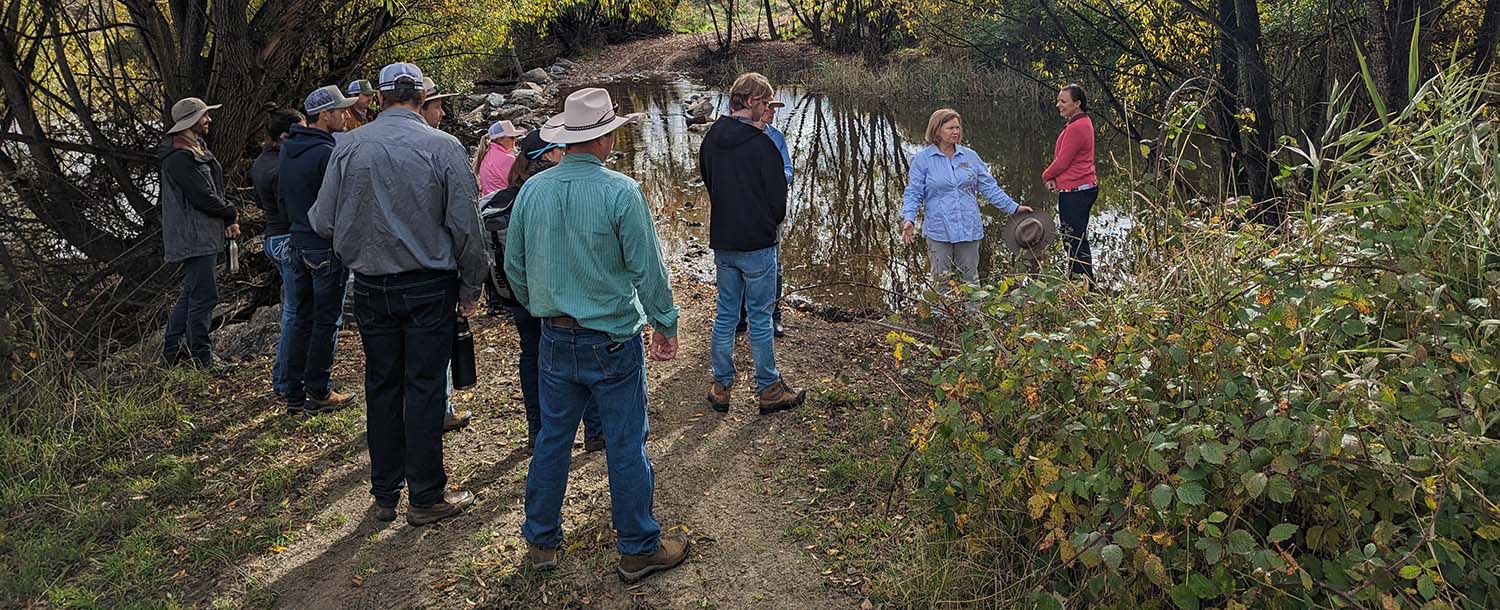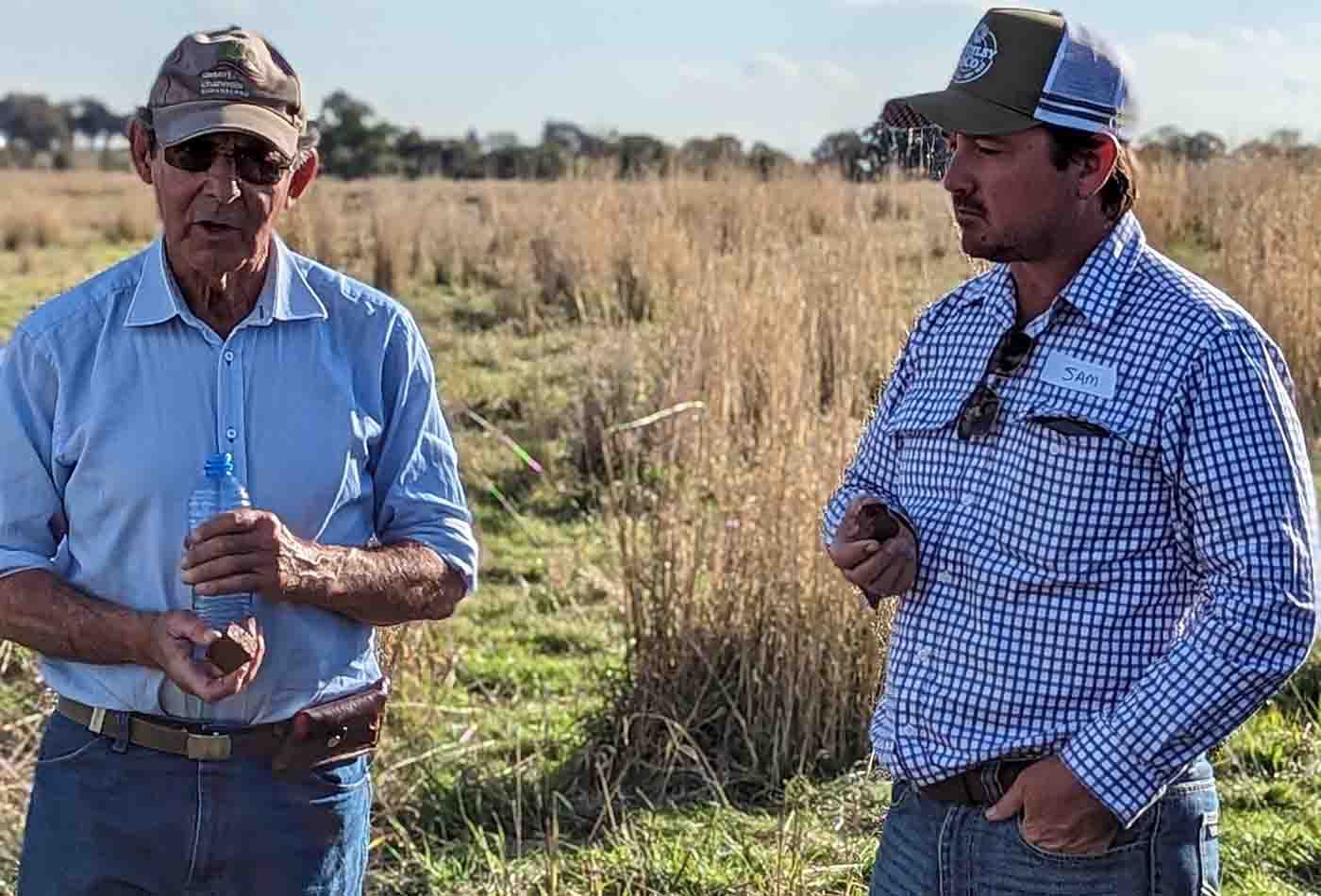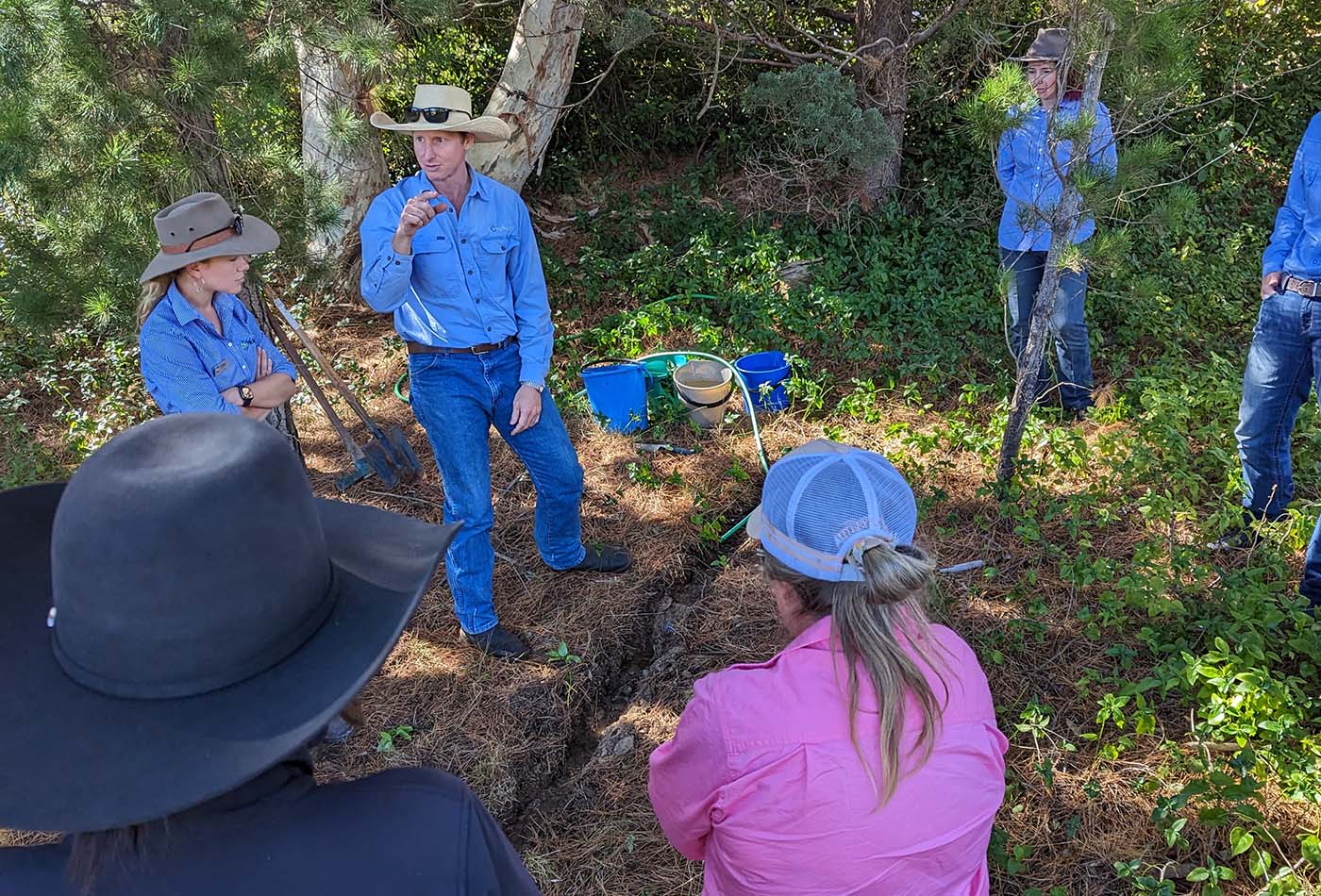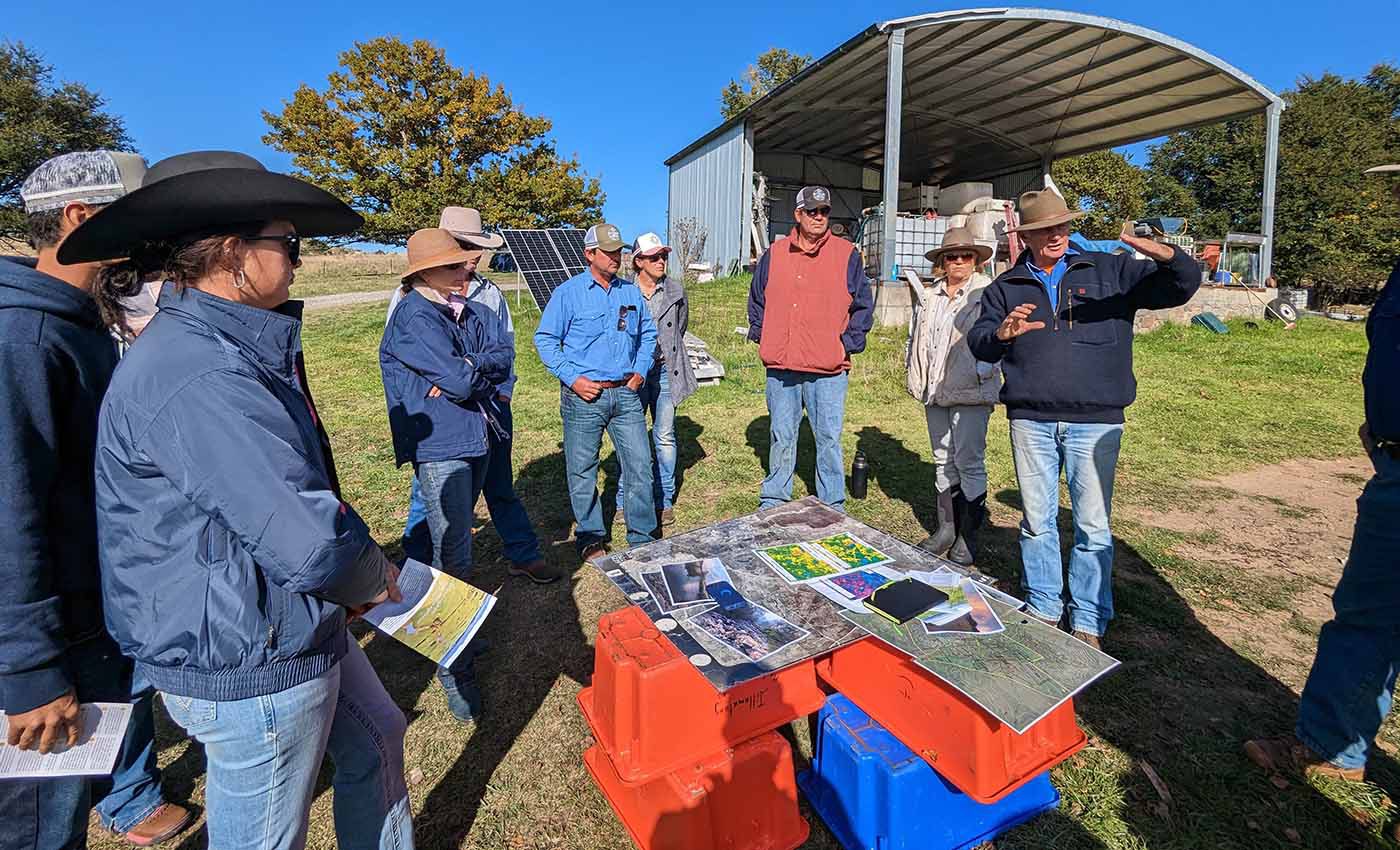Mulloon Institute tour a watershed moment for NQ graziers
A five-day trip to The Mulloon Institute near Canberra turned into a watershed event for 10 North Queensland graziers last month.
The 10 graziers representing five properties in the Bowen, Broken Bogie (BBB) district, Burdekin and Upper and East Burdekin catchments were led on tour by NQ Dry Tropics’ Grazing Team Leader Josh Nicholls and Grazing Field Officer Cameron Sims.
Mr Nicholls said the idea was to expose NQ graziers who had shown a capacity for adopting new ideas to some advanced regenerative grazing techniques that had been in place for a long time… decades in some instances.
The trip was a Landholders Driving Change initiative supported by funding from the partnership between the Australian Government and the Great Barrier Reef Foundation.
Mr Nicholls said topics discussed during the tour included landscape rehydration, landscape function, soil health, pasture composition, biodiversity in the landscape and regenerative agriculture.
“It was a great group. Everybody had a different perspective on some of the presentations and properties we visited,” Mr Nicholls said.
“A 10-minute presentation, for example, was often followed by 90 minutes of questions and that led to further discussion.
“And the talk across the table at every meal, every break, was almost always about the farm just visited, or the most recent presentation. People were keen to discuss and examine what they had been shown.”
The group toured the Mulloon Home Farm and toured farms using a wide range of regenerative farming techniques from high-end science-driven properties through to 2019 Landcarer of the Year David Marsh’s minimal input nature-focused property on the final day.
In between property tours, the group participated in a series of “bootcamp” sessions with various Mulloon Institute representatives including Townsville-based Regenerative Agricultural Consultant Sam Skeat who focused on landscape rehydration.
BBB grazier John Skinner from White Kangaroo Station between Bowen and Collinsville said the trip had sparked many thoughtful conversations with wife Bree about how what they saw related to their property.
“It’s not something you can line up directly,” he said.
“It’s very different country, different conditions, different rainfall, different climate there, so different strategies.
“They can probably run a beast to an acre, where we’re more likely to be running one beast for every 13 or 14 acres in most years… very different.
“But, that said, there were things we picked up, particularly with slowing water flow and knowing how to plug creeks and flowlines to get a result.”
He said weeks later, he and Bree were still talking about different aspects of the things they had seen on the tour.
“It’s certainly got us onto a different line of thought,” he said.
The visit to 2019 Farmer of The Year, David Marsh’s minimal-input farm was particularly instructive.
“He had some of the best grass cover with very little inputs,” Mr Skinner said.
“It just shows the more you look after your country, the better it will be for all sorts of life on it.”
Lamington Park graziers Sam and Genevieve Clarke were excited to see a country that had benefited for decades from the sort of rotational grazing regimes they introduced five years ago.
“Now that we’ve seen what can be achieved in five or six years, it was great to see what can be established in the longer term,” Mr Clarke said.
“You always get to a stage where you want to accomplish something more, the next thing, the next level.
“This showed us… particularly when you’re talking about diversity, for instance”
“It was great to see how they were driving soil structure and soil carbon.
“It really was confirmation for us that we were on the right track.”
He said if ever they were to buy another block of land to graze, he would be sure of his ability to improve even the most degraded, barren patch of dirt.
“Having the confidence that you will be able to get something happening, is a powerful thing,” he said.
Mr Clarke said the trip could not have been with a better group of people.
“We all knew of each other, without actually knowing each other,” he said.
“Everybody had a slightly different take on things and as a result, it was a really good group to be with because you got a different angle on things you wouldn’t have got without that group.
“I will definitely stay in touch with the others.”
Lamington Park, Woodstock grazier Sam Clarke, (right), with David Marsh, 2019 Landcarer of the Year at his minimal input farm near Canberra.
The Mulloon Institute Regenerative Agriculture Consultant Sam Skeat conducting one of the Institute’s “boot camps” to instruct landholders about how to prevent erosion and rehydrate a landscape.
Martin Royd at Jillamatong talking about nutrient cycling in grazing landscapes during the group’s visit.
ALSO IN THIS ISSUE:




